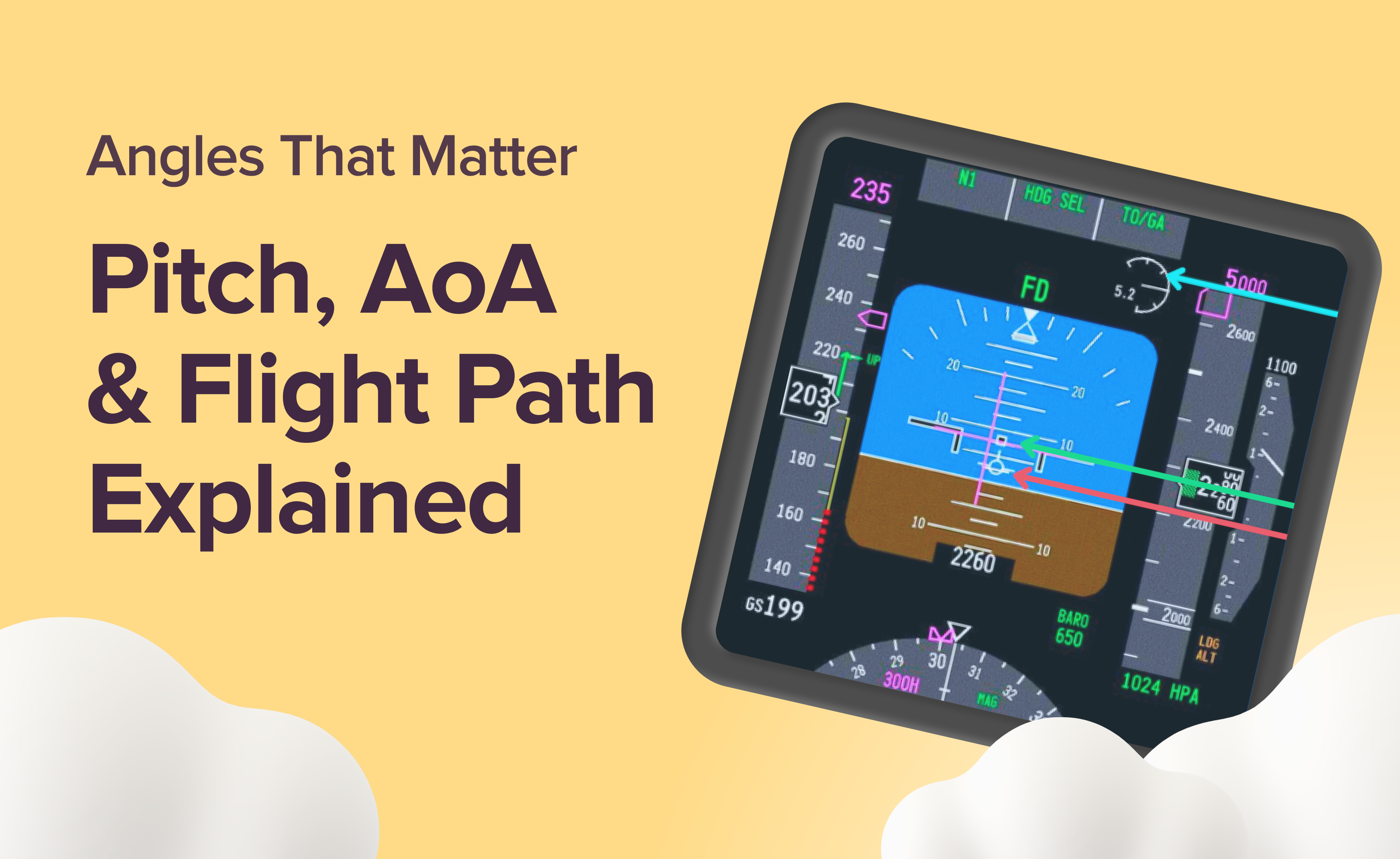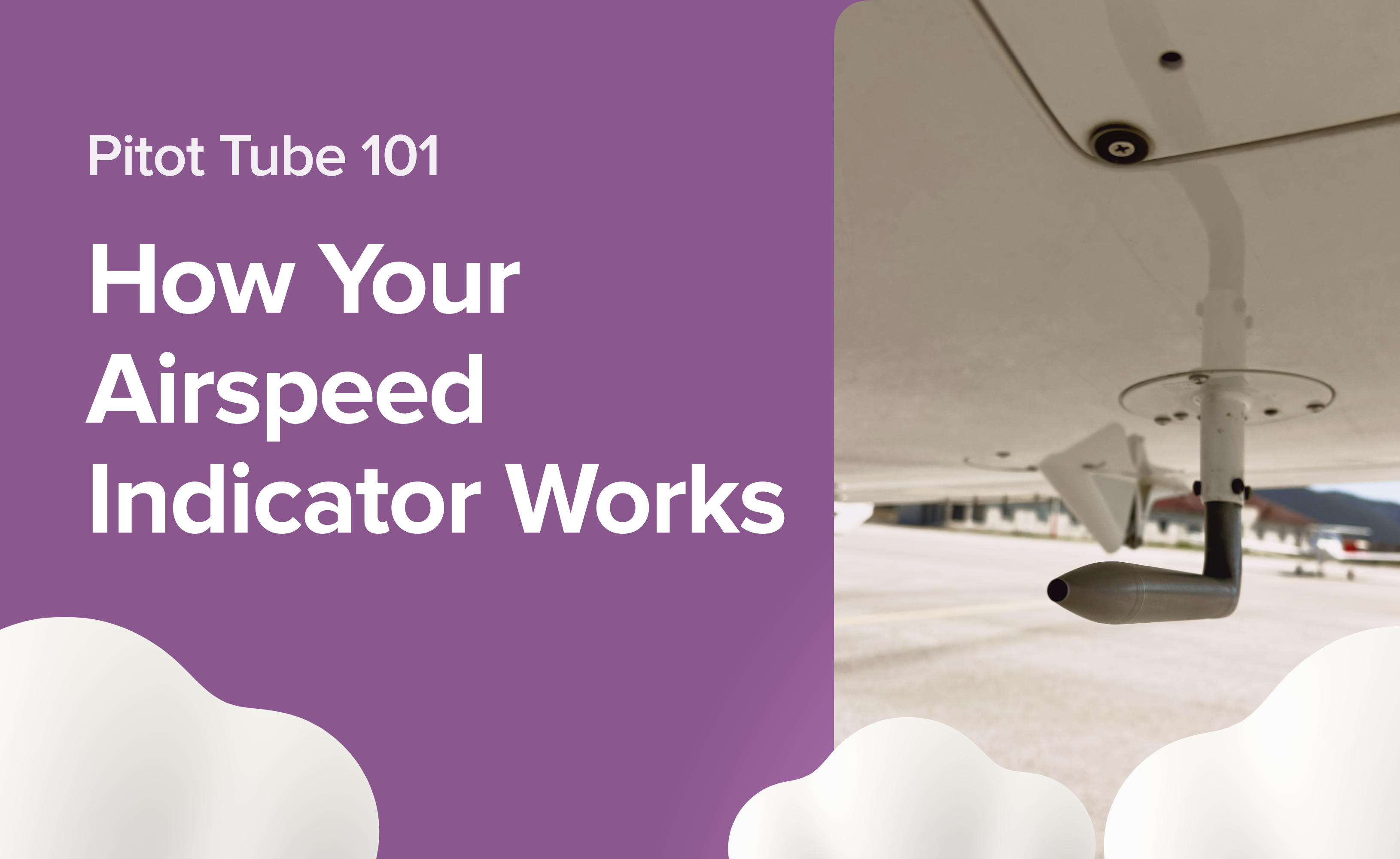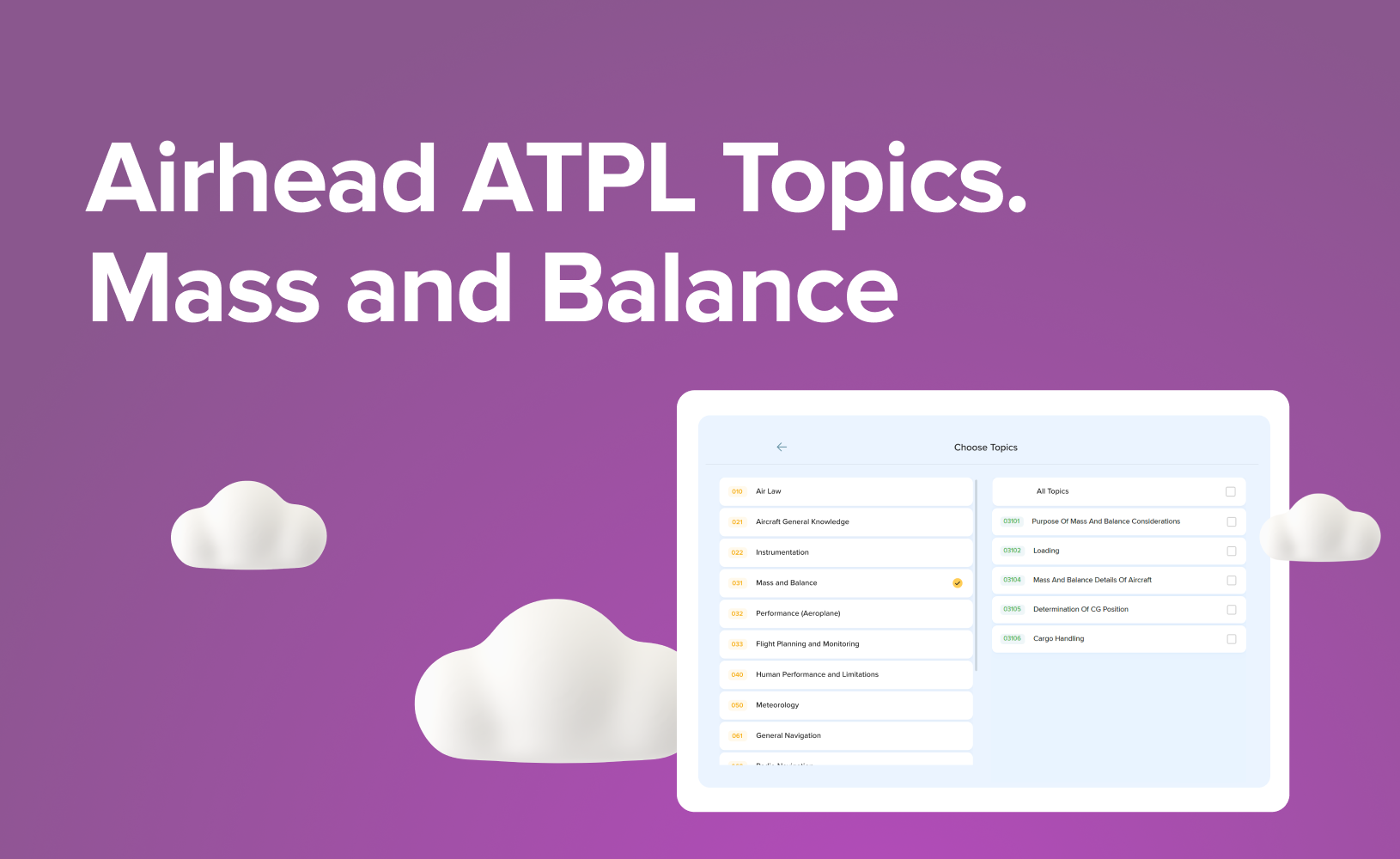Know Your Airspeed: From Indicated to True
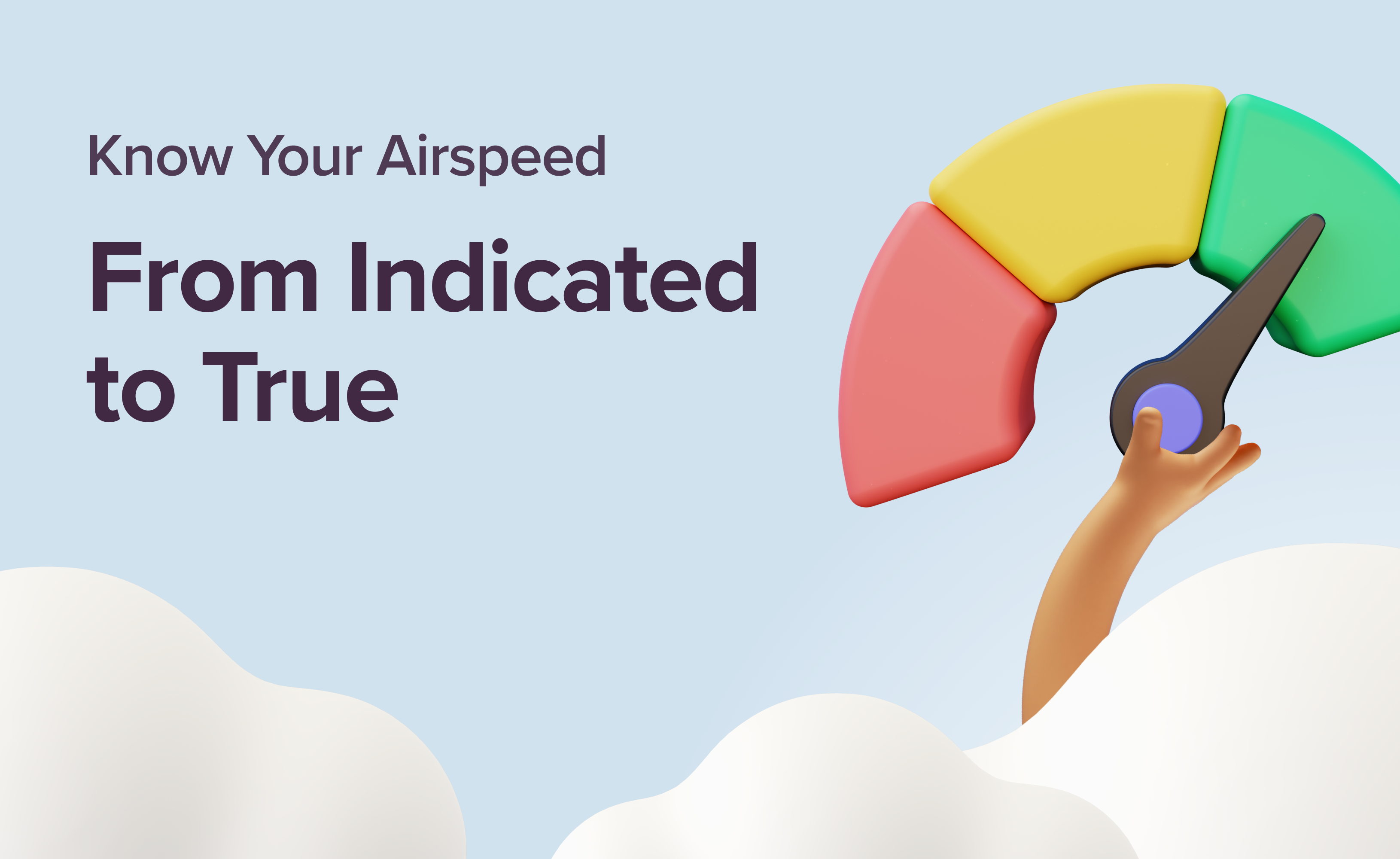
If aviation had a motto, it might be: "Why use one definition when you can use five”. From altitude types to cloud classifications, the flying world has a knack for splitting hairs. And for good reason. Clarity and precision save lives in the sky. And when it comes to airspeed, there’s no exception.
Yes, your plane is flying at a single speed through the air. But depending on what you’re measuring (and why) you might hear it described as Indicated, Calibrated, True, Equivalent, or Groundspeed.
Sound confusing? It doesn’t have to be. In this guide, we’ll break down each airspeed type, explain when and why it matters, and show you how to calculate or interpret it as a student pilot. Because knowing your airspeeds isn’t just a box to check on a written test — it’s key to flying safely, efficiently, and confidently. Ready to speed through the airspeed confusion? Let’s go.
Why So Many Airspeeds?

It’s one of those “only in aviation” quirks that actually makes a lot of sense once you unpack it. The truth is, there isn’t one “airspeed” that tells you everything you need to know. Different types of airspeeds exist because each one accounts for (or ignores) different variables, like air pressure, altitude, instrument error, or wind.
Here’s the big idea: Indicated Airspeed (IAS) is what your airspeed indicator reads. But that reading doesn’t always reflect what’s actually happening outside the aircraft. Enter Calibrated, True, Equivalent, and Groundspeed. Think of them like different camera lenses on the same aircraft, each shows a slightly different angle, and together, they give you the full picture.
IAS helps you obey speed limits and fly by the book.
CAS adjusts for minor instrument or installation errors.
EAS becomes important at higher speeds where compressibility of air matters.
TAS tells you your actual speed through the air mass, crucial for navigation and flight planning.
GS is your real-world travel speed over the ground, affected by wind.
Indicated Airspeed (IAS)
What You See Is (Mostly) What You Get

Indicated Airspeed (IAS) is the most familiar and most referenced airspeed in the cockpit, because it’s the one you actually see on your airspeed indicator.
It’s called “indicated” because it’s exactly what’s indicated by the pitot-static system. But IAS is not “perfect, because is not corrected for instrument or position error, altitude, or temperature.
Why IAS Matters
It determines when your aircraft will stall (stall speeds are based on IAS).
It’s used for manoeuvring speeds (Va), V-speeds (like Vx, Vy, Vfe), and more.
It's the reference for speed limits in regulations and the Pilot Operating Handbook (POH).
IAS remains a reliable performance reference at any altitude, even though it becomes increasingly inaccurate as you climb due to lower air density. That’s why we correct it (more on that with TAS), but for day-to-day flying and checkrides, IAS is what matters most.
Want to know the science behind your airspeed readings? Read our latest blog: Pitot Tube 101: How Your Airspeed Indicator Works.
Calibrated Airspeed (CAS)
IAS with a Tune-Up
Calibrated Airspeed (CAS) is IAS corrected for instrument and position error. Or, in other words, it is the airspeed that should be after correcting inaccuracies in the airspeed indicator itself and disruptions in airflow around the static and pitot ports.
For most modern training aircraft in straight and level flight, IAS and CAS are nearly the same, differences are usually within 1–2 knots. However, during slow flight, steep climbs, or slips/skids, the difference becomes more pronounced.
You’ll often find a CAS-to-IAS conversion chart in your POH. It’s usually tucked into the performance or limitations section. It worth checking out, especially during checkride prep!
Ensure safety and precision: “Beyond the Routine: Understanding Aviation Checklists” covers the importance of checklists and how to use them effectively.
Equivalent Airspeed (EAS)
EAS = CAS corrected for compressibility effects.
While Calibrated Airspeed (CAS) is accurate enough at lower speeds and altitudes, once you start climbing higher and approaching transonic speeds, compressibility begins to affect accuracy. That’s when EAS becomes relevant.
For most student pilots and general aviation flying below 200 KTAS and under 10,000 feet, EAS is rarely a practical concern.
Facing obstacles in your flight training? “Training Challenges: 12 Reasons Why Student Pilots Quit” offers insights and solutions to help you persevere.
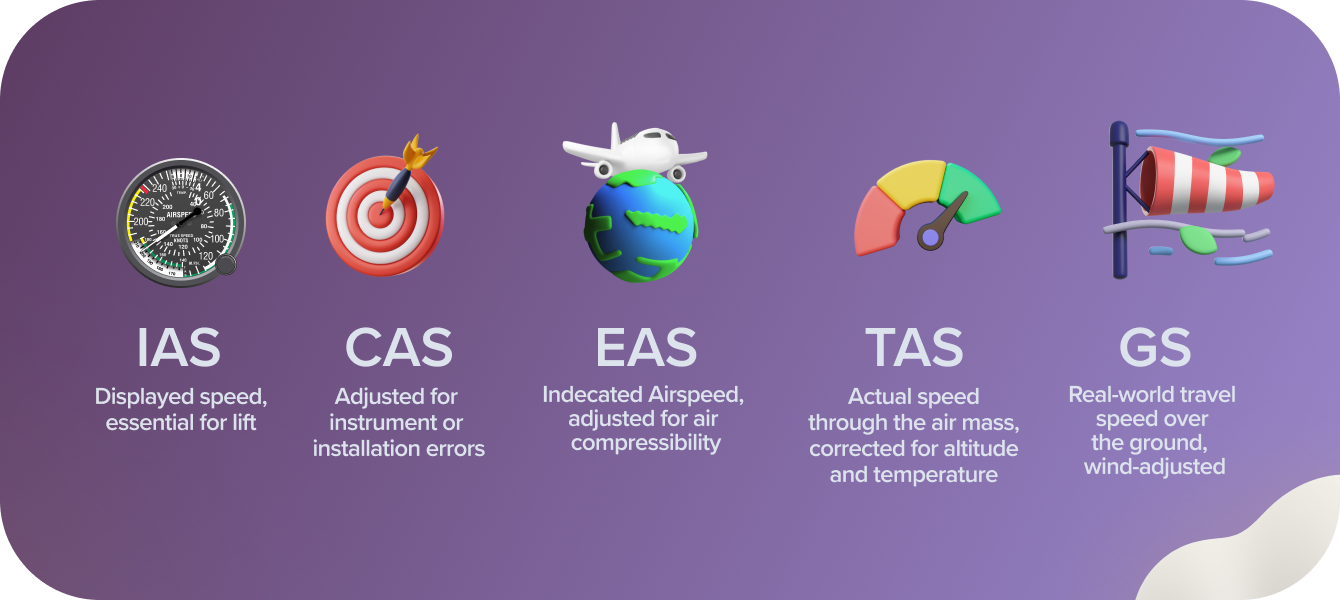
True Airspeed (TAS)
The Speed You’re Really Flying
True Airspeed (TAS) is your actual speed through the air mass, how fast you’re moving relative to the surrounding air. It is CAS corrected for non-standard air density, which means adjusting for altitude and temperature.
As altitude increases, the air gets thinner (lower pressure and density). For the same CAS, you’re moving through more air molecules per second at low altitudes than at high ones. So even though your CAS might read the same, your TAS is higher the higher you go.
Why TAS Matters?
TAS is used to calculate groundspeed and estimated time enroute.
It’s what flight computers and E6Bs use for flight planning.
You’ll need TAS for ATPL theory, performance calculations, and cross-country flying.
How to Estimate TAS:
Add 2% to CAS for every 1,000 feet above sea level.
Example: At 10,000 feet, add 20% to CAS: If CAS = 120 KT → TAS ≈ 144 KT
For more accurate results, use your flight computer (E6B) or a flight app, especially if temperature is significantly different from standard.
Pro Tip: Some modern aircraft have TAS displayed directly on the airspeed indicator, especially in glass cockpits. But knowing how to estimate it manually is a solid pilot skill.

Groundspeed (GS)
Your True Speed Over the Ground
Lastly, we have Groundspeed (GS). As its name suggests, this is simply the speed at which your aircraft is moving relative to the ground below. It’s the number that really matters when it comes to ETAs, flight planning, and fuel burn, because it reflects how fast you’re actually getting from point A to point B.
Why Groundspeed Matters
It determines how long it will take you to reach your destination.
More accurate GS = better fuel use predictions.
You might be flying fast through the air, but if you’re facing strong headwinds, your progress over the ground can be painfully slow.
How to Estimate Groundspeed:
It’s your True Airspeed (TAS) ± wind.
GS = TAS + Tailwind
GS = TAS – Headwind
Example: If your TAS is 140 KT and you have a 20 KT headwind → GS = 120 KT. Same TAS with a 20 KT tailwind → GS = 160 KT
Pro Tip: GS can fluctuate throughout a flight, especially at low altitudes or in changing wind conditions. Always monitor and update your groundspeed during cross-country flying.
Real ATPL Exam Question
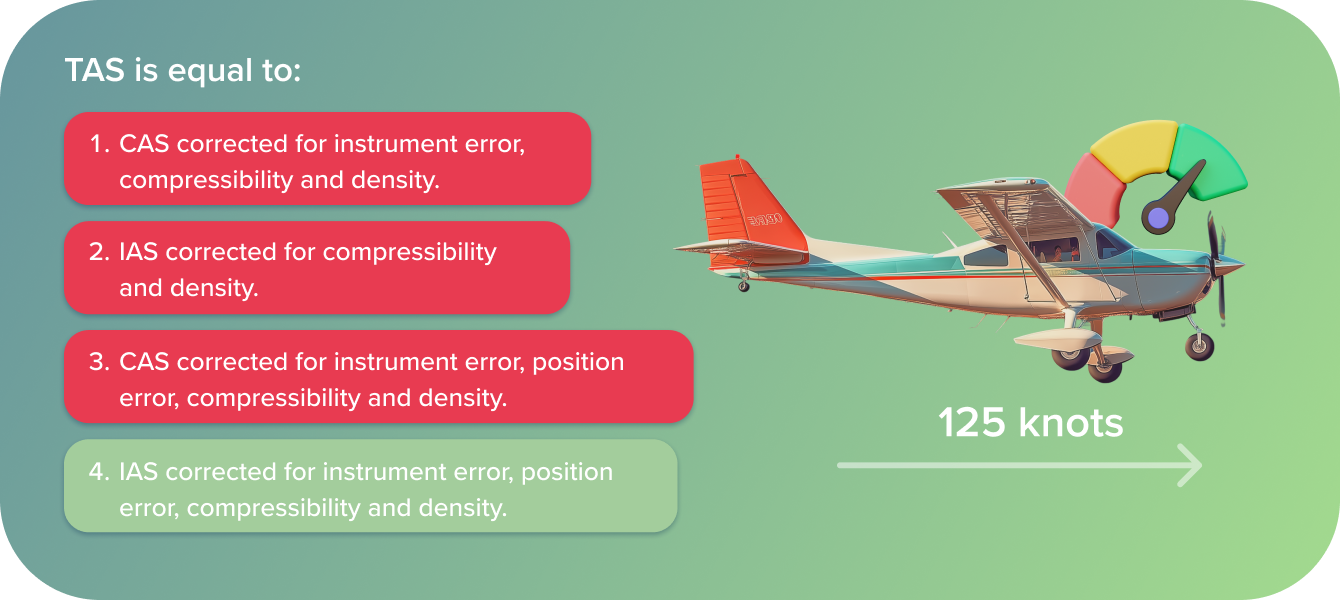
Let's look at a real exam question concerning True Airspeed (TAS) you may encounter in your Instrument Rating writings.
Question: What is True Airspeed (TAS) equal to?
Correct Answer: Indicated Airspeed (IAS) corrected for instrument error, position error, compressibility, and density.
Why do we add all these corrections to IAS to get TAS? Think of it this way: each correction “peels back” an imperfection, bridging the gap between the airspeed you read on your instrument and your aircraft's actual speed through the air mass. Because each layer peels back one more imperfection between the airspeed you read and the actual speed you’re flying through the air mass. So, to turn IAS into TAS, you need to correct for: instrument inaccuracies (instrument and position error), air squishiness (compressibility) and air thinness (density).

A fun way to remember the sequence of corrections and what comes next.
Ice Cold Egg Toast, Garnished
IAS → CAS → EAS → TAS → GS
Keep the ATPL exams from becoming your aviation Everest. Unlock the secrets to success with these proven student strategies and question bank tips.
Airspeeds Comparison Table
Keep your airspeed knowledge sharp, and you’ll stay one step ahead of the flight. Fly smart, stay safe — and always know what your instruments are really telling you.
Airspeed | What It Means | Corrects For | Displayed On Instruments? | Used For |
IAS (Indicated) | What the airspeed indicator shows | None | Yes | Basic flying, aircraft performance limitations (V-speeds) |
CAS (Calibrated) | IAS corrected for instrument and position error | Instrument & position error | No | Charts, more accurate performance data |
EAS (Equivalent) | CAS corrected for compressibility error | Compressibility | No | High-speed flight, flight testing |
TAS (True) | Actual speed through the air | Air density (altitude + temp) | No (but computed on some avionics) | Navigation, flight planning |
GS (Groundspeed) | Actual speed over the ground | Wind (adds/takes away from TAS) | Yes (with GPS) | Time en route, navigation |







